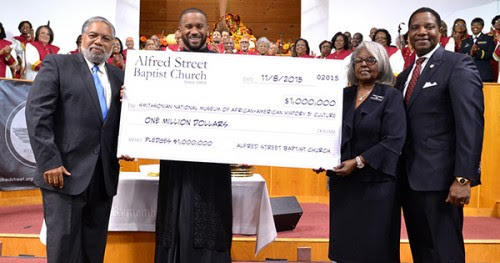
by Lori Lakin Hutcherson (@lakinhutcherson)
Lacks, a mother of five, lost her life to cervical cancer at age 31. During her treatment, doctors took cells from her body and discovered they lived long lives and reproduced indefinitely in test tubes. These “immortal” HeLa cells have since contributed to over 10,000 medical patents, aiding research and benefiting patients with polio, AIDS, Parkinson’s disease and other conditions.
Considering the history of medical testing on African Americans without their permission, the fate of Lacks raised questions about ethics, privacy and racism. Rebecca Skloot’s 2010 best-selling book, The Immortal Life of Henrietta Lacks, addressed those issues and later prompted Oprah Winfrey’s Harpo Productions to adapt her story into a theatrical movie that first aired on HBO in 2017.
“It is fitting that Henrietta Lacks be honored at two Smithsonian museums, as each approaches American history from unique and complementary perspectives,” said Kim Sajet, director of the National Portrait Gallery. “Lacks’ story presents moral and philosophical questions around issues of consent, racial inequalities, the role of women, medical research and privacy laws, providing rich platforms for historical understanding and public dialogue.”
“The National Museum of African American History and Culture has always felt that the story of Henrietta Lacks is a significant and important moment that deserved greater recognition,” said Lonnie Bunch, director of the museum.
Commissioned by HBO, Nelson used visual elements to convey Lacks’ legacy. The wallpaper features the “Flower of Life,” a symbol of immortality; the flowers on her dress recall images of cell structures; and two missing buttons allude to the cells taken from her body without permission.




